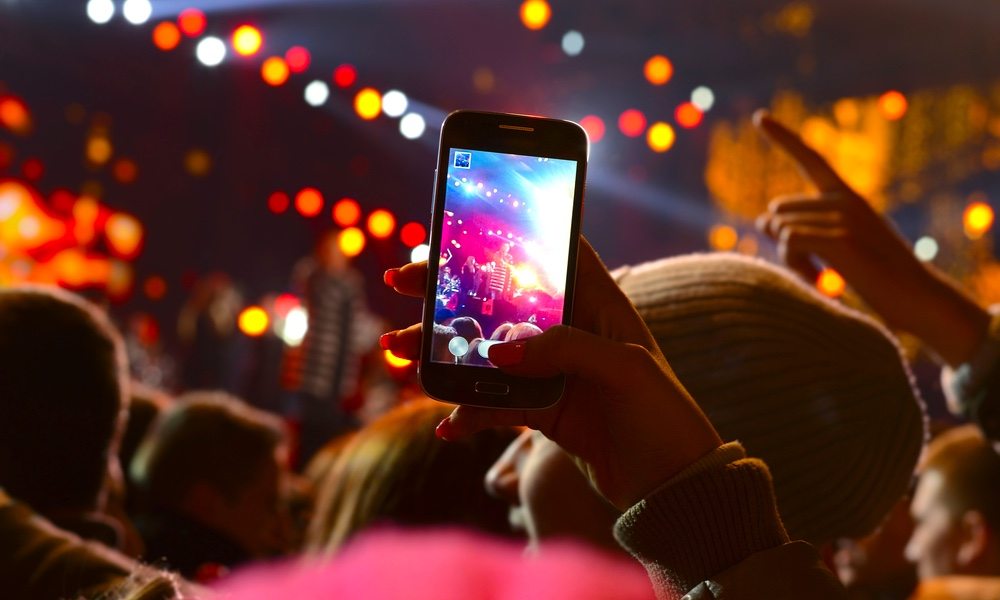Apple Granted Patent to Disable iPhone Cameras at Concerts

Toggle Dark Mode
Smartphones allow us to instantly share our experiences with our friends and families. We can snap photos, take videos, or even live stream any event in our daily lives to share across a variety of social media platforms. During live music events, however, many people take this ability a bit too far.
While it’s fun to be able to snap a photo, Snapchat, or short video of one of your favorite bands playing, many people end up viewing the entire show through their smartphone screens as they record the set from start to finish. Many music venues, as well as theaters, museums, and the like have signs posted up asking attendees to avoid taking photos or video – which many people ignore.
The argument can certainly be made that this takes the fun out of the experience for the attendee recording the whole thing, but it poses a different set of problems for other concert-goers, and of course the musicians themselves. Trying to crane your head to see a show while standing behind a sea of phones certainly detracts from the experience, and musicians attempting to protect their intellectual property no doubt hate seeing video of all of their performances popping up all over YouTube and Facebook. A new patent granted to Apple looks to solve this problem.

The patent, titled “Systems and methods for receiving infrared data with a camera designed to detect images based on visible light”, describes a method in which an infrared emitter can be used to disable the camera in an iPhone or iPad. When the phone’s camera detects the infrared beams, it can shut down the image or video recording process. The technology would be useful in music venues, for sure, but also in movie theaters, museums, or even banks or government buildings where photography or recording is not permitted.
“For example, an infrared emitter can be located in areas where picture or video capture is prohibited, and the emitter can generate infrared signals with encoded data that includes commands to disable the recording functions of devices. An electronic device can then receive the infrared signals, decode the data and temporarily disable the device’s recording function based on the command.”
The patent mentions that the camera would only be disabled while it’s pointed at the emitters (in the concert example, the emitters would likely be placed on or above the stage). Concertgoers who wish to take a selfie with their friends could do so, as long as the camera isn’t pointed at the stage. The patent also mentions how the emitters could be used to enhance a user’s experience at, say, a museum.

“An infrared emitter can be located near an object and generate infrared signals with encoded data that includes information about that object. An electronic device can then receive the infrared signals, decode the data and display the information about the object to the user.” Point your camera at a piece of art, and the emitter can send information, even photo and video, about the piece to the user.
The patent itself was applied for in 2011, and was just granted recently. However, like many of Apple’s other patents, it would be surprising to see it actually put into practice. If it is, I’m sure iPhone users would be split on whether or not the emitters would be a good or bad thing. No more clips or images of your favorite artist on stage could be quite the downer for some concertgoers, but the lack of phones held up from the crowd could be a blessing for many others.
Let us know what you think about the technology and its ramifications in the comments.






